Tamaki, a setting of clear running waters and a garden overflowing with the allure of the four seasons
When the snow on Mt. Gassan begins to melt, animals and plants that lay dormant
in the forest start waking up, and you can hear the sounds of
living creatures throughout the garden. Around the time flowers begin to bloom,
nature's colorful landscape comes alive with
different hues as the long-awaited spring arrives.
A garden where you can experience spring, summer, fall, and winter
SpringMarch–May
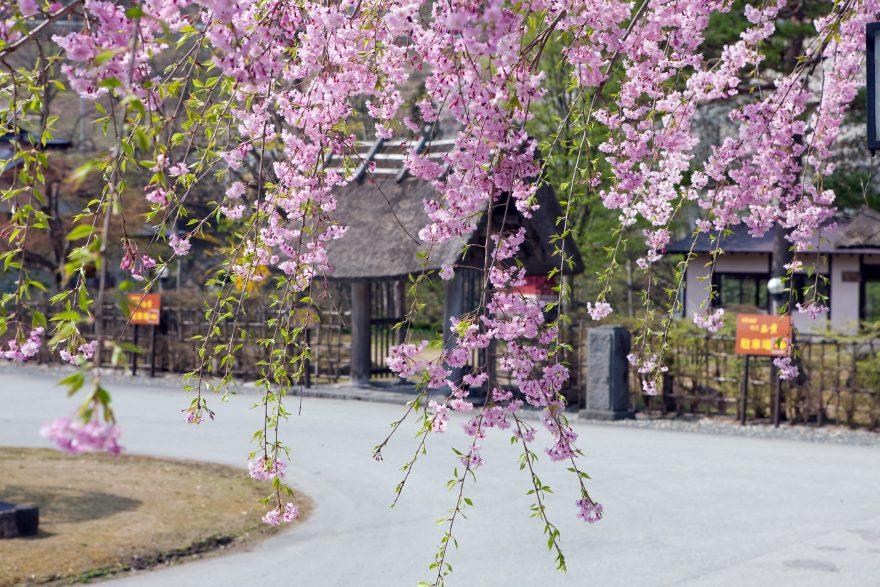
The season when dormant plants and animals wake up
Around the time the melted snow from Mt. Gassan becomes a babbling stream signaling spring, the blessing of nature that is Sagae River, which quietly flows below Tamaki, gently soaks the fields in Nishimurayama. The melted snow filled with nutrients from the soil of Mt. Gassan is a long-awaited treasure to the wild vegetables. It is the best season for eating Gassan bamboo shoots, 'taranome' (Aralia sprout), and 'kogomi' (ostrich fern) nourished by the blessing of the Sagae River.
When the snow on Mt. Gassan begins to melt, animals and plants that lay dormant in the forest start stirring, and you can hear the sounds of living creatures throughout the garden. Around the time flowers begin to bloom, nature's colorful landscape comes alive with different hues as the long-awaited spring arrives.
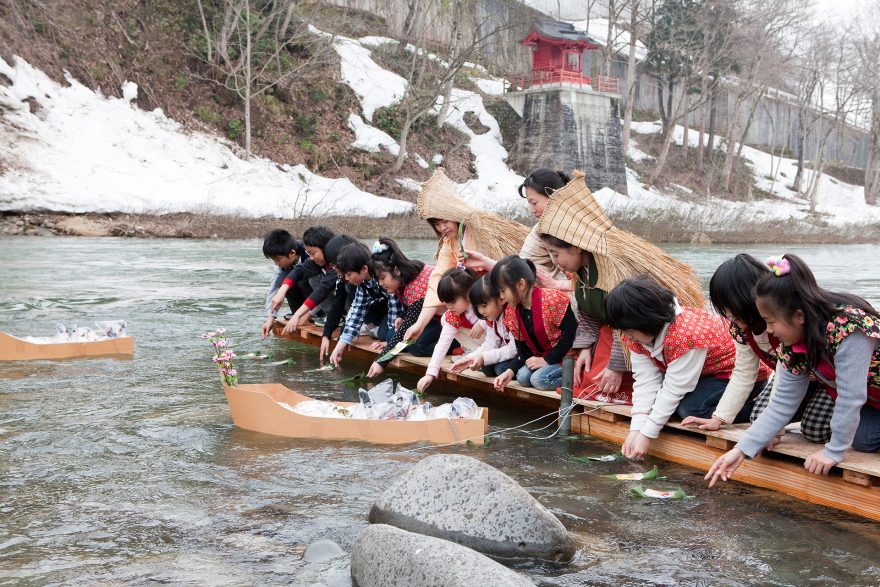
Hina-nagashi, releasing hina dolls on water to ward off calamity
In a corner of the room displaying the hina dolls at Tamaki, there are paper dolls to write wishes on for nagashi-bina. In this Shinto ritual, various wishes are written on the paper and released on the river to pray for health and happiness. It is held on April 4 (March 3 on the lunar calendar). For more information, see the "Hina doll collection" page.
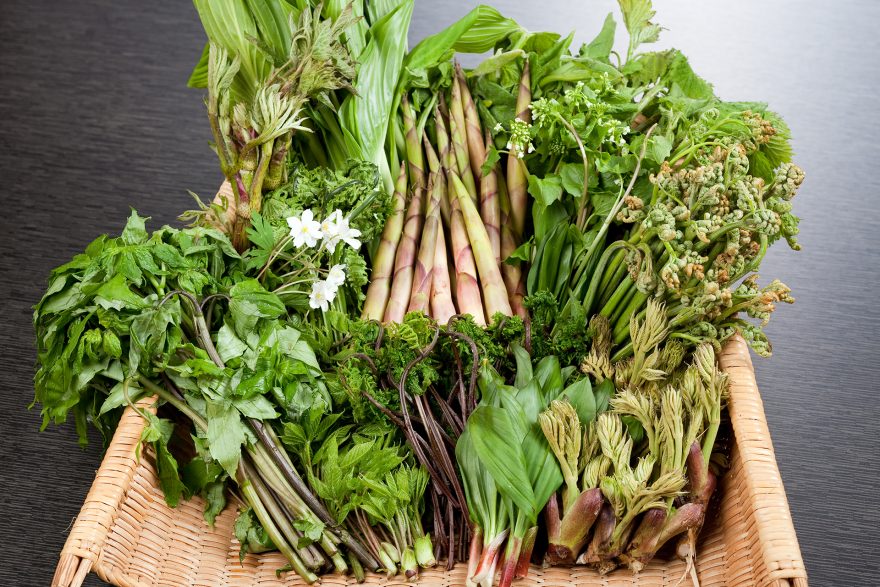
A season of abundant wild vegetables.
Young buds rush to begin breaking out from the warm earth and stretching toward the sky, and the bounties of spring appear throughout Mt. Gassan. An array of fresh ingredients also start appearing in our culinary dishes for our guests to heartily enjoy the bountiful flavors of nature. Indulge in wild vegetable dishes of spring while viewing the quiet waters of the Sagae River flowing before you.
SummerJune–August
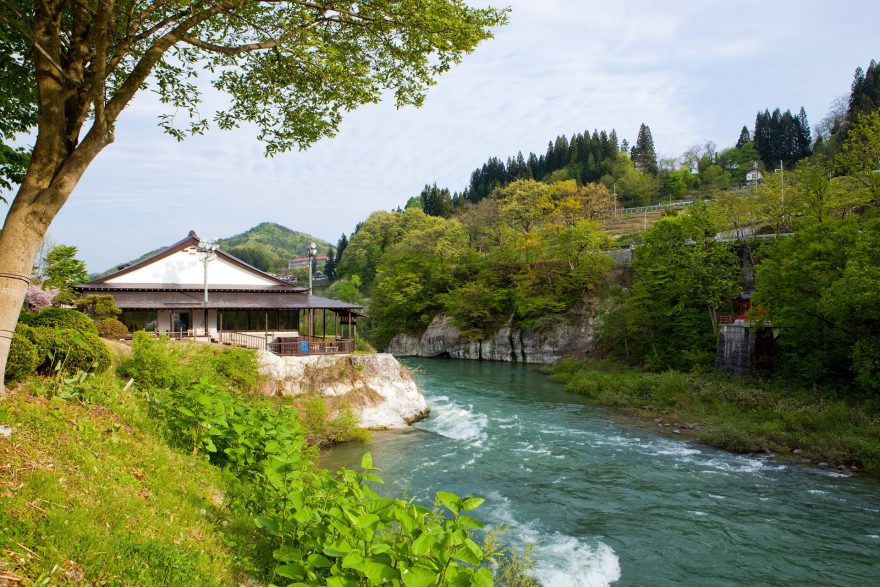
A wealth of summer wild vegetables
When summer arrives, flowers and greenery grow in abundance, and a myriad of animated birds and other animals appear. The trees on Mt. Gassan also grow a vibrant green. Around this time, with the coming of summer the river fish swim freely around the Sagae River that flows right next to Tamaki. The comfortable, cool feeling from the running river makes you forget the sweltering days of summer.
In summer, the dishes served at Tamaki become rich with freshly picked wild vegetables such as 'yamaudo' (Aralia cordata) and 'warabi' (bracken), as well as river fish that live in clear waters, such as sweetfish and char nourished by the melted snow of Mt. Gassan.
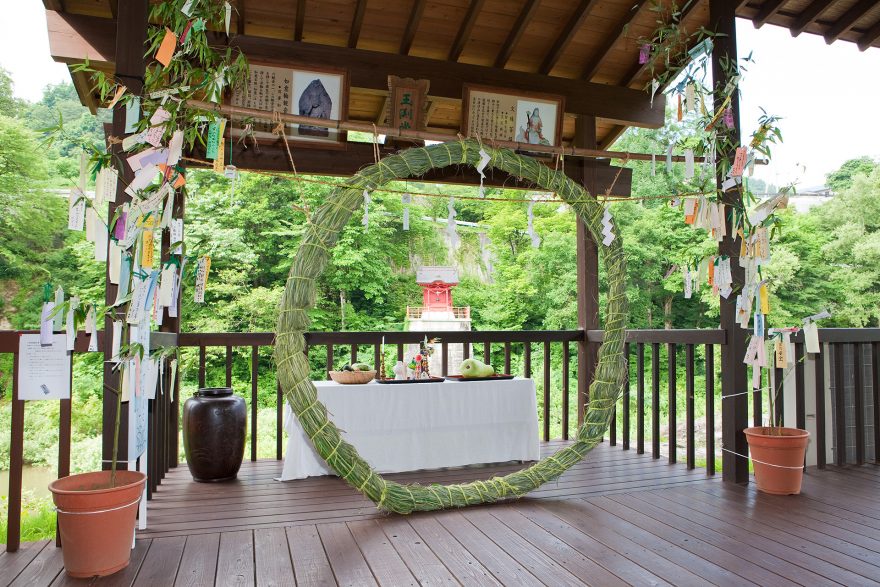
Passing through 'chinowa' to ward off evil
Since ancient times it has been said that the robust vitality of cogon grass has the mysterious potential to ward off calamities. It is believed that by passing 3 times (left, right, left) through chinowa, a ring made from a bundle of cogon grass, will exorcise impurities in the first half of the year and prevent plague with its divine grace.
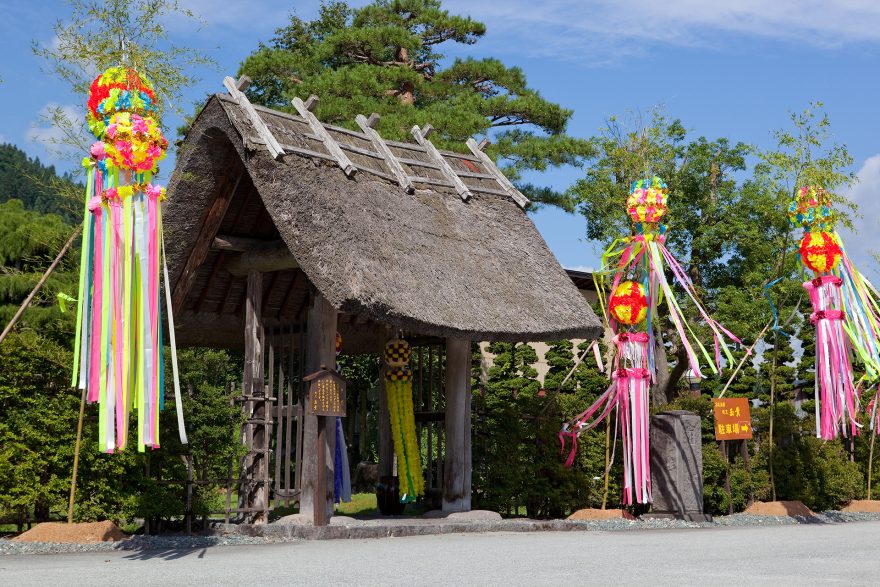
A multitude of attractions in Tohoku
Why not experience the dynamic festivals of Tohoku (northeast)? The summer festival season is full of the delights of Tohoku. Events include the Nebuta Festival in Aomori, Kanto Festival in Akita, Tanabata Festival in Sendai, and Hanagasa Festival in Yamagata.
AutumnSeptember–November
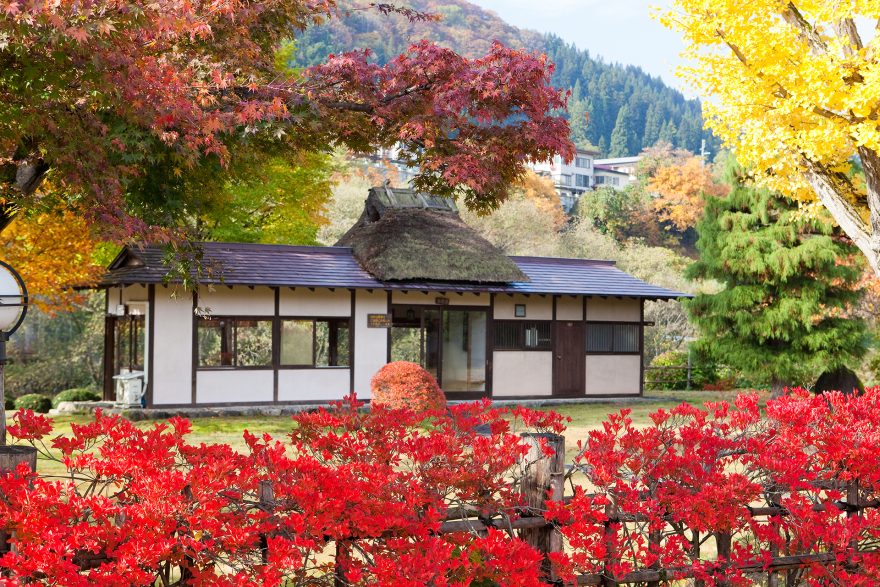
The mountains turn color with the arrival of autumn
Autumn comes in a hurry to Tamaki, which is located close to the foot of Mt. Gassan. The mountain turns color with crimson foliage, and autumn-leaf viewing in the vicinity of Mt. Gassan is a sightseeing highlight representative of Yamagata.
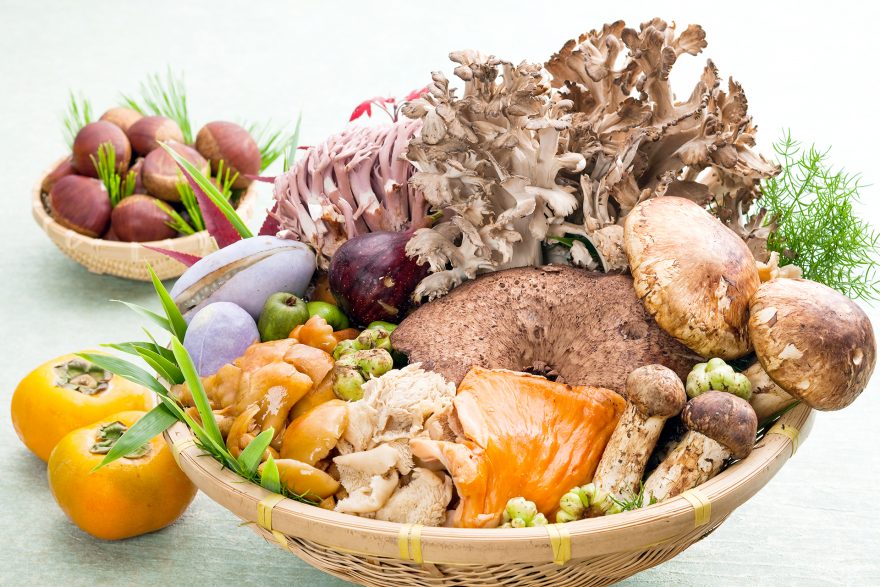
Mushrooms are synonymous with autumn in Yamagata
In addition to 'matsutake' and 'shimeji' mushrooms, Tamaki serves highly prized mushrooms that are difficult to obtain, including 'hokitake' called cauliflower coral, 'sawamotashi' (honey fungus) that has an interesting texture and makes good soup stock, and 'susutake' (Sarcodon aspratus) that becomes more tasty and aromatic the more it is dried. Be sure to eat your fill of Tamaki's special mushroom dishes to experience these rare flavors.

Edible chrysanthemums, a local flavor from Yamagata
Yamagata is the largest producer of edible chrysanthemums in Japan. They have been appreciated in Yamagata since long ago as a taste of autumn and are well known to residents. The chrysanthemums are thought to have come to Japan from China in the Nara period (710–794) as a medicinal herb, and long ago were used as herbal medicine. Colorful chrysanthemum dishes are visually appealing and a wonderful healthy food.
WinterDecember–February
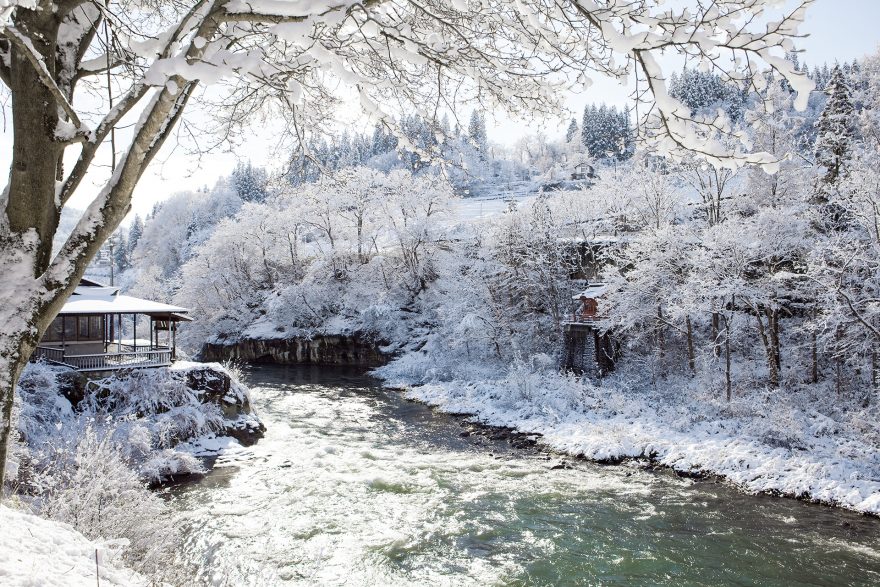
A silent snowy world reverberating only with the sounds of running water
The first snow on Mt. Gassan falls early as winter in Yamagata begins in early October. The silent snowy world outside the window reverberating only with the sounds of running water makes you forget the rush of daily life and soothes the soul.
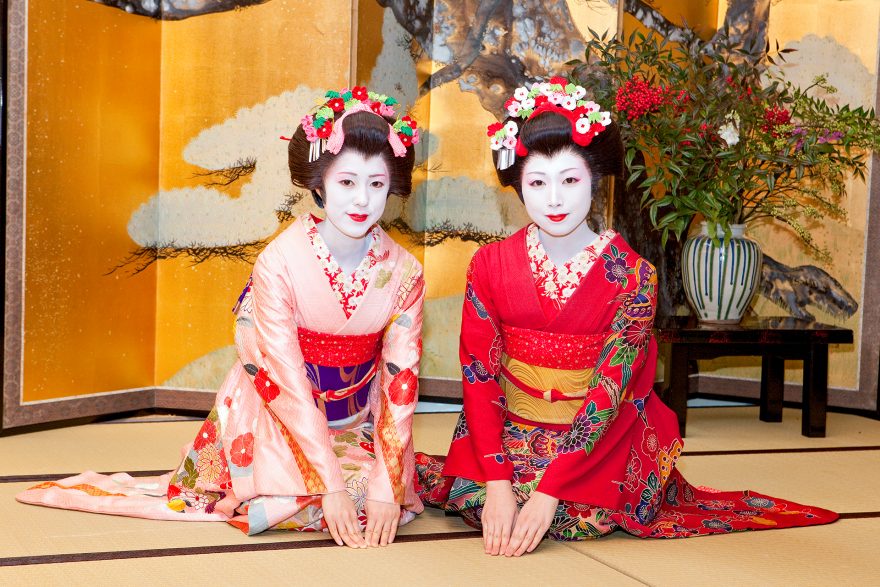
Exquisite moments spent with Yamagata 'maiko'
In this season, at Tamaki you can enjoy exquisite moments with Yamagata maiko, a tradition in Yamagata that has been loved since long ago. Satiate your appetite with our special cuisine while being charmed by maiko dancing and the music of the 'shamisen' (3-stringed Japanese lute). Yamagata maiko only appear on Fridays and Saturdays from December to January.
More Information: Yamagata maiko
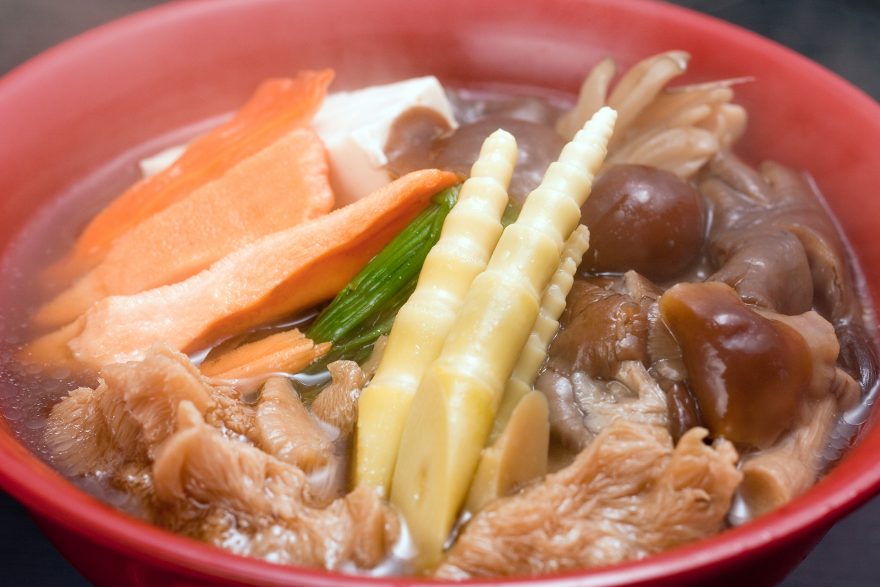
A Tamaki specialty, 'nanatake sansai-jiru'
This mountain vegetable soup will warm up your body and spirit in the cold winter season. Even when it is biting cold outside, you will be warmed from within while sitting with close friends around a steaming pot. This is a great dish to enjoy over good conversation. Eat your fill while taking in the beautiful landscape found only in snow country.